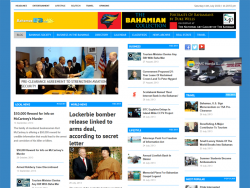The Caribbean Hotel Association (CHA) is calling on regional governments that own national flag carriers to abandon the “traditional narrow ‘best’ solution” – which usually ends in the impoverishment of essential services as millions of dollars in subsidies must be poured into these unprofitable airlines – and consider a new model in which all national flag carriers form a regional alliance.
The model allows the national flag carriers to keep their status as national flag carriers and thus “capitalise on their loyalty and brand” while creating economies of scale that would result in better prices, more competitive fares, a single ticketing system and better arrangements with other airlines in Europe, the USA, and South America.
According to research undertaken by the CHA the “Dominican Republic has seen the highest tourism growth in the region over the past several years and it has no national airline. Tourism growth there with the arrival of service from the new low cost airlines has skyrocketed”.
The body that represents the region’s number one industry also notes that the failure of national flag carriers has been accomplished without competition from Low Cost Carriers such as JetBlue and Spirit but that is about to change. CHA reports that Fort Lauderdale-based “Spirit is now targeting the region”.
Despite the evidence – Air Jamaica racked up $1 billion [in losses] before the Jamaican government was forced to take control of its failure.
The government of The Bahamas has decided that privatisation is the best possible option for Bahamasair. Indeed, the Minister responsible for Bahamasair, Bradley Roberts, stated during his contribution to the Budget Debate (2005-2006) that the “invitation for expressions of interest has been published to test investor appetite for investing in the national flag carrier”.
Minister Roberts, in expressing the government’s rationale for its move to privatisation, stated that the “PLP government supports the need for a national flag carrier. However, in order for this airline to efficiently compete in today’s environment, it is felt that it should be controlled by private interests not the government.” According to Minister Roberts the government would limit its holdings in a privatised Bahamasair to 25 percent.
The Guardian has learned that in response to the “invitation for expressions of interest” at least one Bahamian-led group has submitted a plan to privatise Bahamasair. If history is any teacher, should Bahamasair be privatised, within a decade or less the government of The Bahamas will discover that it will have to resume control of an airline considerably poorer than when it was first privatised.
The reason for this is that small national airlines such as Bahamasair, Air Jamaica, BWIA and LIAT – all regional carriers – simply lack the scale or networks to command competitive prices for fuel, negotiate profitable routes or strike lucrative alliances.
Regional airlines or national flag carriers as they are known, have been established as a symbol of an independent country and supposedly a source of national pride. The reality is that they have always been a drain on scarce national resources.
Minister Roberts stated that in fiscal 2005-2006, Bahamasair was projected to “generate revenues of $76 million and expenses of $86 million for a net loss of $10 million, a $2 million improvement over this fiscal year”. He stated that revenue growth would come from “some core business growth, more US Air code share traffic, seat guarantees, more Santo Domingo traffic, more charters, along with the start-up of a new route into Kingston, Jamaica.”
Despite the progress made by Bahamasair, the Minister stated bluntly that the government could not continue pouring “hefty subsidies” into Bahamasair. Hence the drive to privatise.
But whichever group decides to take Bahamasair private will have to face additional competition from LCCs like Spirit and the CHA is predicting that this competition will “see revenues plummet and losses mushroom as the region’s point-to-point airlines compete head on head on with the lower cost US point-to-point airlines” [like Spirit]. The CHA is predicting that the lower fares will see “increased traffic – both nationals and visitors – but the increased traffic is unlikely to bring profitability to the region’s national airlines”.
CHA states that “in the new environment of unrestricted Open Skies” competition will simply multiply the losses to national flag carriers thus continuing the unacceptable wasting of scarce financial resources.
The CHA says only an integrated network will save national flag carriers, a network that “accesses passengers that their point-to-point competitors cannot access.”
In effect the national flag carrier or airline model has run its course and will not be salvaged by privatisation plans. Air Jamaica has proven that as well as BWIA and LIAT. The preliminary findings from McKinsey and Company state that Bahamasair has no future in the US markets and should the LCCs move into the region, as they plan to do, it will also lose the few routes it has been trying to establish in the region.
National pride or not, Bahamasair cannot become viable merely from flying between Florida and The Bahamas.
By: C. E. HUGGINS, Nassau Guardian Business Editor



